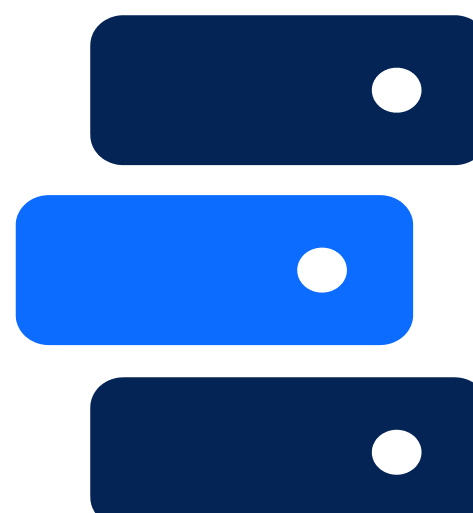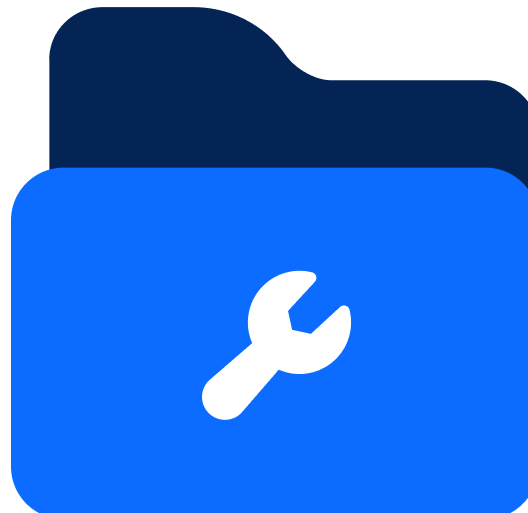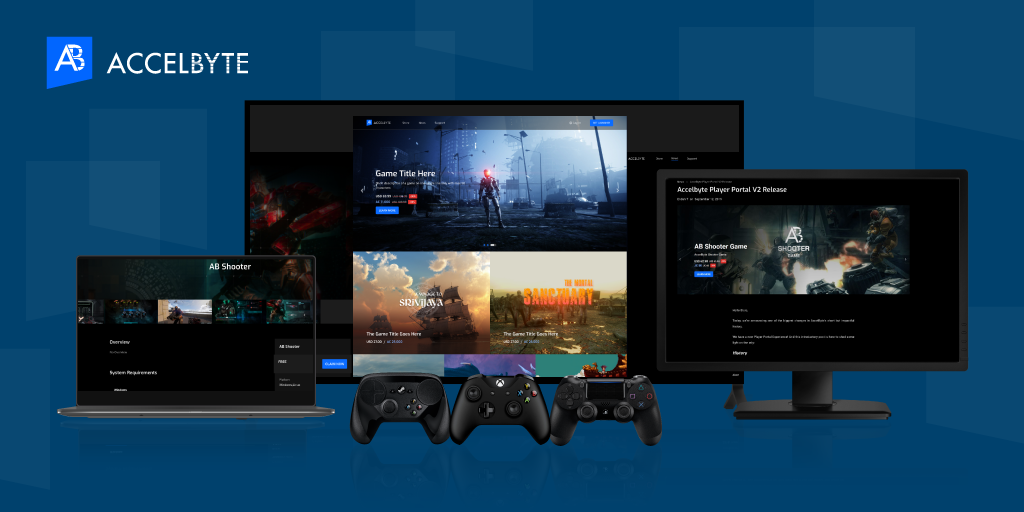Getting Started
Introduction to AccelByte Gaming Services (AGS)

Backend Services
Skip boring dev work with plug-and-play systems for 80% of your game’s backend

Backend Customization
Build 20% of the backend that makes your game unique without managing it

Server Orchestration
Automate spinning up and scaling servers globally for smooth, low-latency sessions

Build Distribution
Deliver builds faster to testers worldwide so you can ship multiple times a day

Crash Reporting
Catch and fix bugs before players see with real-time crash data and full context

Tools & Utilities
Monitor gameplay, test your setup, and tweak your game without juggling external tools
Introduction to AccelByte Gaming Services (AGS)
Learn to use AGS with our demo game "Byte Wars"
Connect and get support with other members of the AccelByte Community
Submit and review tickets while directly connecting with AccelByte
Join our Discord for support, insights, and networking!

A quick note: This article mainly focuses on the video game markets in North America and Europe. Although quite applicable to Asia.
For the first 2 and a half decades since video games hit the market, you needed to have a quarter, a disk (floppy or 3.5), a cartridge, a CD, a DVD, an HD DVD, or a Blu Ray to play most games.
Almost exactly 15 years ago Valve released Half Life 2, but required prospective players to download a maligned digital rights management software called “Steam”, officially bringing on the new era of digital distribution to the people.
And the people? They were upset…
“This goes against our basic freedoms,” Mike grumbled, as he hunched over the back of his QA colleague’s chair. On the 3rd floor of building 209 at EA’s Redwood Shores campus, Mike wasn’t alone in his sentiment. It felt like the entire PC gaming community, save a few brave (contrarian) souls, were up in arms because they were being “FORCED” to remain online for Half Life 2, and activate that evil, evil DRM.
“What’s Valve tryin’ to pull with this shadiness?” Steve’s skepticism was as thick as the fog rolling over the coastal Santa Cruz Mountains. “Nobody’s gonna go for this, what if my internet is down?” More conversations about how they weren’t going to buy Half Life 2 out of protest. It felt like a month after Half Life 2 launched everyone had forgotten their rage.
Well, we all know how it turned out. The world was changing. Never had to worry about losing or scratching a disk again, you could download anywhere, keep your library everywhere, find your friends, find new games that you never thought you’d love because they were 75% off. It’s safe to say that Steam well and truly took over the PC Gaming world by 2010. Six years from the release of Half Life 2.
We’re in a similar tectonic shift today in 2019. And the story starts with the steadfast resistance of Steam and how silly that looks 15 years later.
Steam dominated for years. As we all know, large publishers like EA, Ubisoft, and Activision-Blizzard created their own launchers and storefronts to capture their respective markets, but they couldn’t capture the hearts and minds of the general core gaming community. Players reluctantly downloaded Origin to play their favorite EA Games, and Ubisoft just decided that you could forgo their platform and gave out Steam keys for their games.
Less corporate outfits popped up to try and grab a few slices of the pie with Humble Bundle taking the charity route, a noble one at that, and GoG going for classic titles as their pull. They worked well for what they were trying to accomplish. But still, no major dent in Steam’s virtual monopoly on Digital Game Storefronts. The communities on Steam, a place where you found your friends, and found your content, was still as magnetic as ever. As a large publisher or studio, it was nearly impossible to circumnavigate Steam on PC because Steam had all the players.
Battle.net was an outlier due to the special relationship Blizzard has with its players. WoW, OverWatch, Diablo, StarCraft, Hearthstone and even HOTS were, and continue to be, so beloved that there wasn’t a lot of player friction when they had to download another client as that’s the way it always had been with Blizzard. Similarly with Guild Wars 1 and 2, LoL, etc.
This was mirrored at PlayStation and Xbox, but the consoles slowly but surely adopted digital distribution, much to the horror of brick and mortar stores like GameStop. The console environments were closed ecosystems where most players stuck to one console or another because, again, that’s where their friends were. A rare tentpole release, like a Halo, might pull someone one way or the other. But the problem for the gamer was they couldn’t play with each other on a different platform. If you wanted to play Battlefield Bad Company 2 with your friends, you had to all be on PC, or all on PS3, etc. You might be thinking, “uhh yeah, we know this already,” but fast forward to 2019 and there are 10s of millions of fresh, new, PC and Console gamers due primarily to Fortnite, MineCraft and Roblox.
Overwatch, PUBG, Dota 2, Counter Strike GO, Minecraft, Rocket League, GTA V Online, Roblox, and Fortnite have grown the PC market considerably in the last 3 years. All of these titles are cross-platform, and most are cross play. These games are the new standard by which we measure. PC market alone is expected to hit $34B in 2020, up from $27B just 2 years prior. And that compliments a prospective global video game market across all platforms at over $150B in 2020.

Back to Steam, the store grew too big in recent times. 1000 games in the catalog in 2010 turned into nearly 30,000 games by 2019. 95% of those games are not good, and that’s being generous. Discoverability was a complete mess on Steam, and the 30% cut was always difficult for the big publishers. Valve seemed lethargic as the other players on the board accelerated their movement, which opened the door for opportunity.
Then Epic stirred the drink. Powered by their billions of dollars from Fortnite, they sought out to prove that Steam (Valve) could, in fact, be challenged. Much is still up in the air, but the darling of PC Gaming, Steam, all of the sudden had a clear and present competitor with lots of money to burn. Epic scoffed at the 30% cut and announced only 12%, a huge change. Game devs cheered, game players jeered. The intertubes blew up with complaints about, “Another launcher?!?”, and “I don’t have the time or patience, and what about my library and my friends?”
Therein lies a very important component to this narrative. Discord.
Before Discord there was in game social chat, Steam Chat, Ventrilo and TeamSpeak, Xfire, and even GeoCities. Also plenty others. But Discord marked the first time video game players had voice chat rooms, text chat rooms, and a community-out-of-the-box besides a handful of serious online multiplayer games. Discord’s takeover of video gamers’ social organization allowed for the diversification of platforms and launchers because they now had a place to find their friends no matter where they launched their game. Discord freed distribution platforms from worrying about that whole social thing.
Then something interesting happened.
With Epic’s big splash, and Discord solving the social problem, the large publishers saw their chance to strike back. Xbox made a huge play by unifying the storefront and account experience between Xbox and PC. They added Game Pass to entice people to come to the platform on PC. Origin did the same with Origin Access. Subscriptions became the attraction and if you play a lot of games, the sub option is an incredible value. Ubisoft’s U-Play stands up and reels all their PC players back in — no more steam keys. Ubisoft builds a deal with Epic to distribute their games at a low cost. Battle.net now houses Activision PC titles. GoG launches the beta of Galaxy 2.0 boasting their unification of game libraries and friends. Bethesda and Paradox release their own launchers and storefronts. Then Bungie divorces itself from Activision-Blizzard and changes platforms back to Steam — looking forward to what they do? And not to mention the new cloud platforms, like Stadia, become yet another distribution channel for deployment.
All of that happened within the last year!
There’s a growing sense of urgency among major studios and publishers to take back their players. They are more compelled to stand at ground zero, or the first degree from those communities. Why not use launchers and consoles as distribution platforms? Why not tie your user accounts from PC, Xbox, Playstation, Nintendo, Epic Store, Steam, GoG, Cloud gaming, etc into one pool? Follow them from game to game, platform to platform, and reward them, entice them, and encourage them to play across any platform with their friends? The technology is there now. Look at the most popular games on the planet and almost all of the top 20 are online, multiplayer games-as-a-service.
Going back a couple decades, there have been plenty of MMO’s, MOBA’s (LoL), and dedicated server communities that required their own launcher and housed the social elements of communities within the game. Everquest 1 and 2, WoW, Dark Age of Camelot, RuneScape, League of Legends, Modern Combat, Counter Strike, Minecraft, etc, etc, all required their own launcher/patcher to play the game. Having multiple icons on your desktop for games and/or launchers is nothing new. Even going back to the 90’s, pc desktops were littered with icons like Civ, SimCity, Quake, Half Life, Doom, Wolfenstein 3D, Duke Nukem, Diablo, Descent, Warcraft, C&C, Leisure Suit Larry, etc.
The resistance to multiple launchers as we close in on 2020 feels eerily similar to the backlash that Steam and digital rights management experienced 15 years ago. It’s ironic that Steam’s longterm dominance of the PC Gaming space acts as a catalyst for this change.
Expect this trend to continue as studios and publishers recapture their audiences and reward them for coming home, no matter where they launch the game.
Please reach out to us at hello@accelbyte.io if you have any questions.
Reach out to the AccelByte team to learn more.